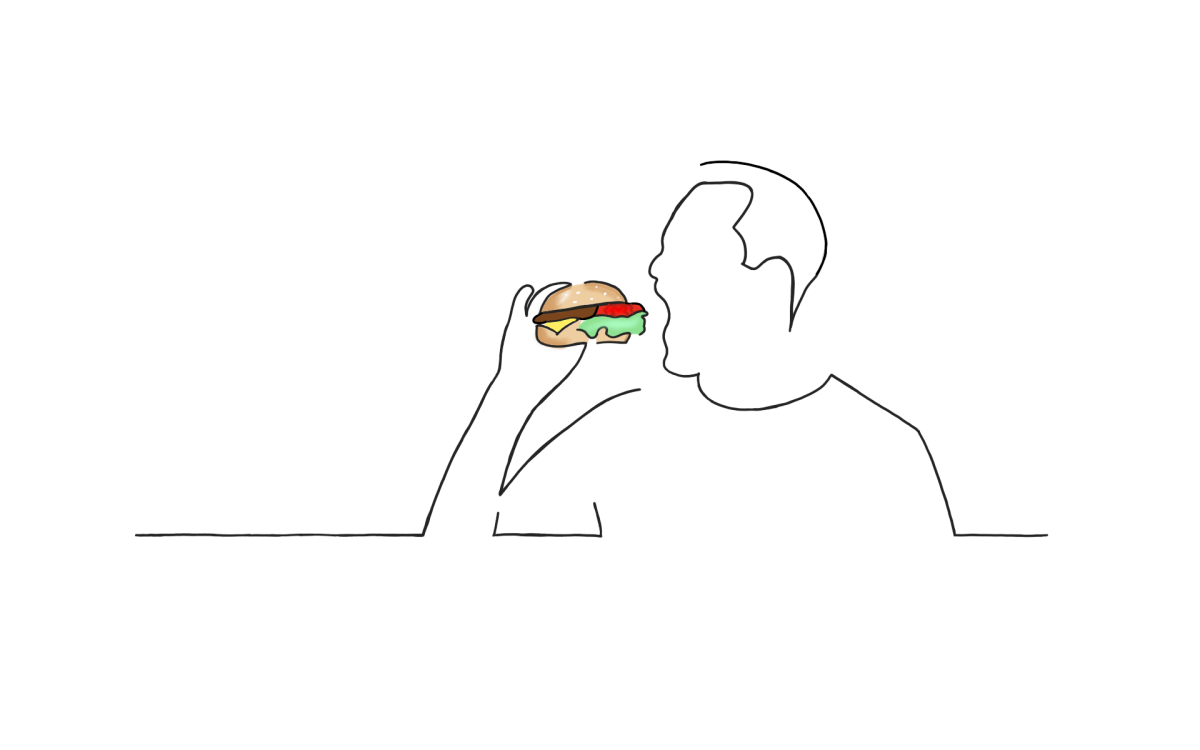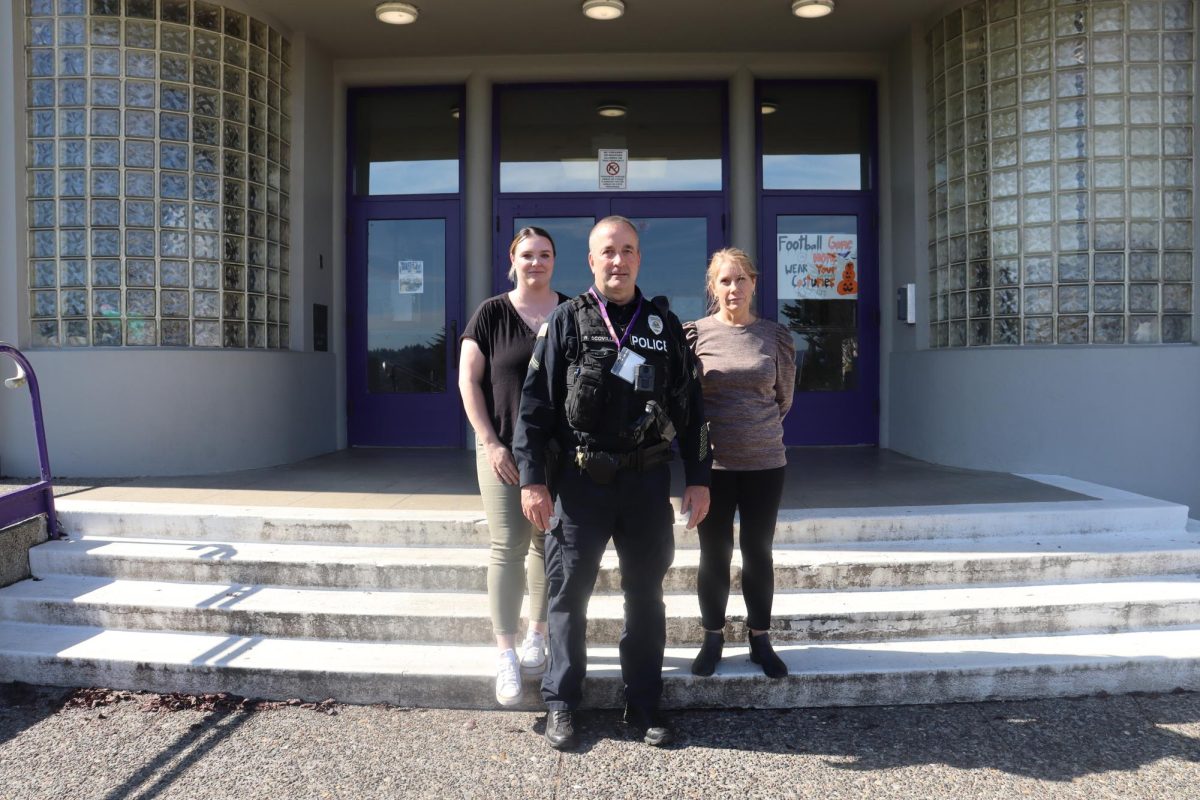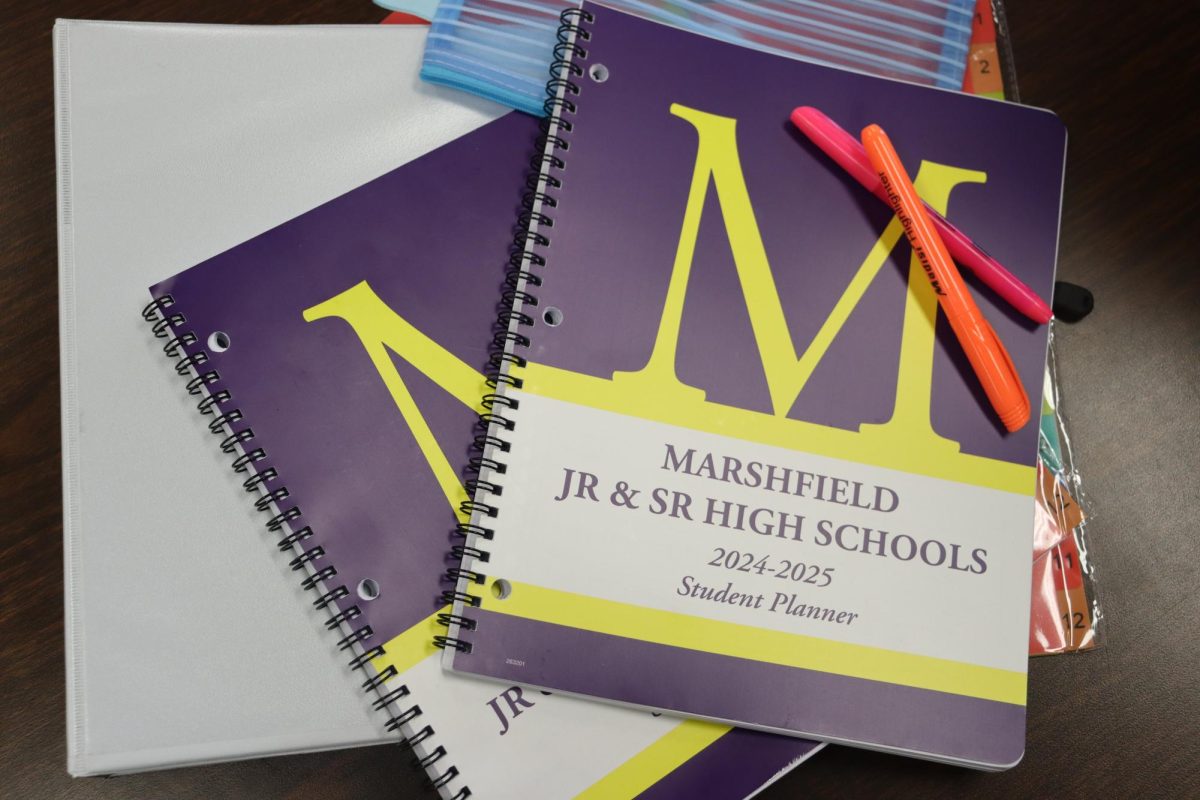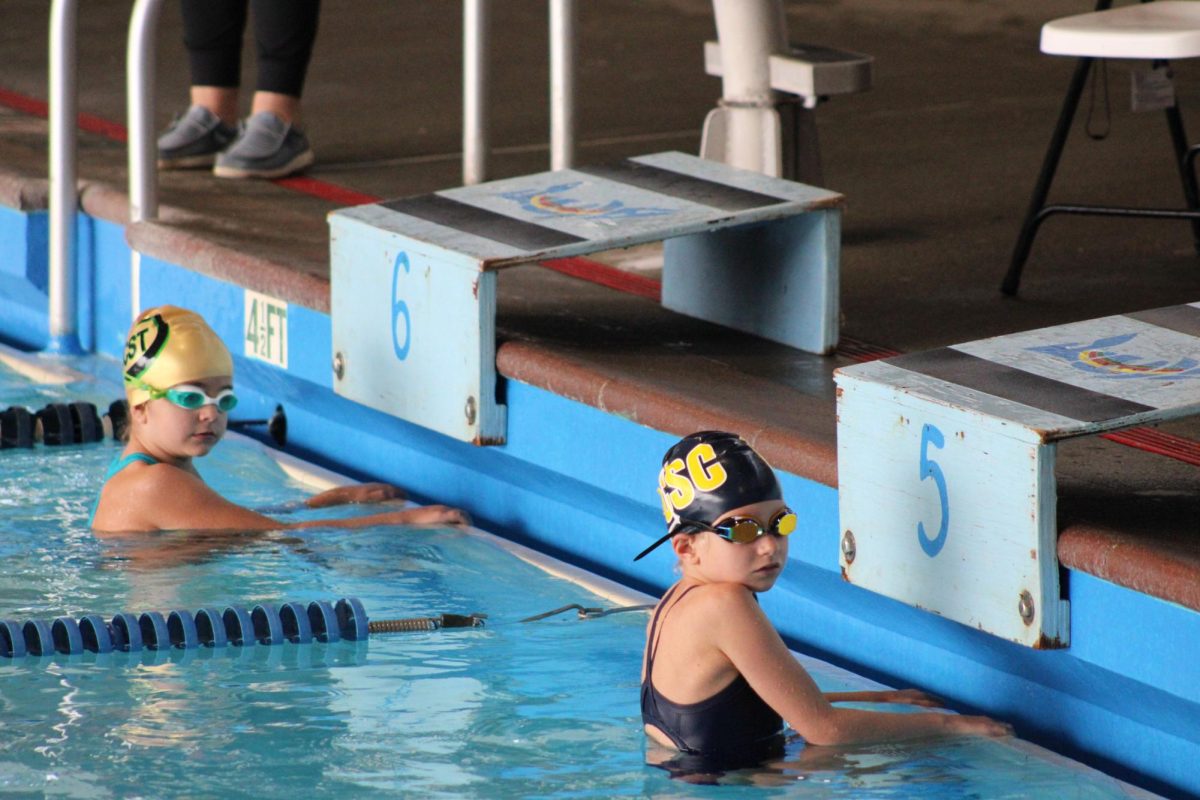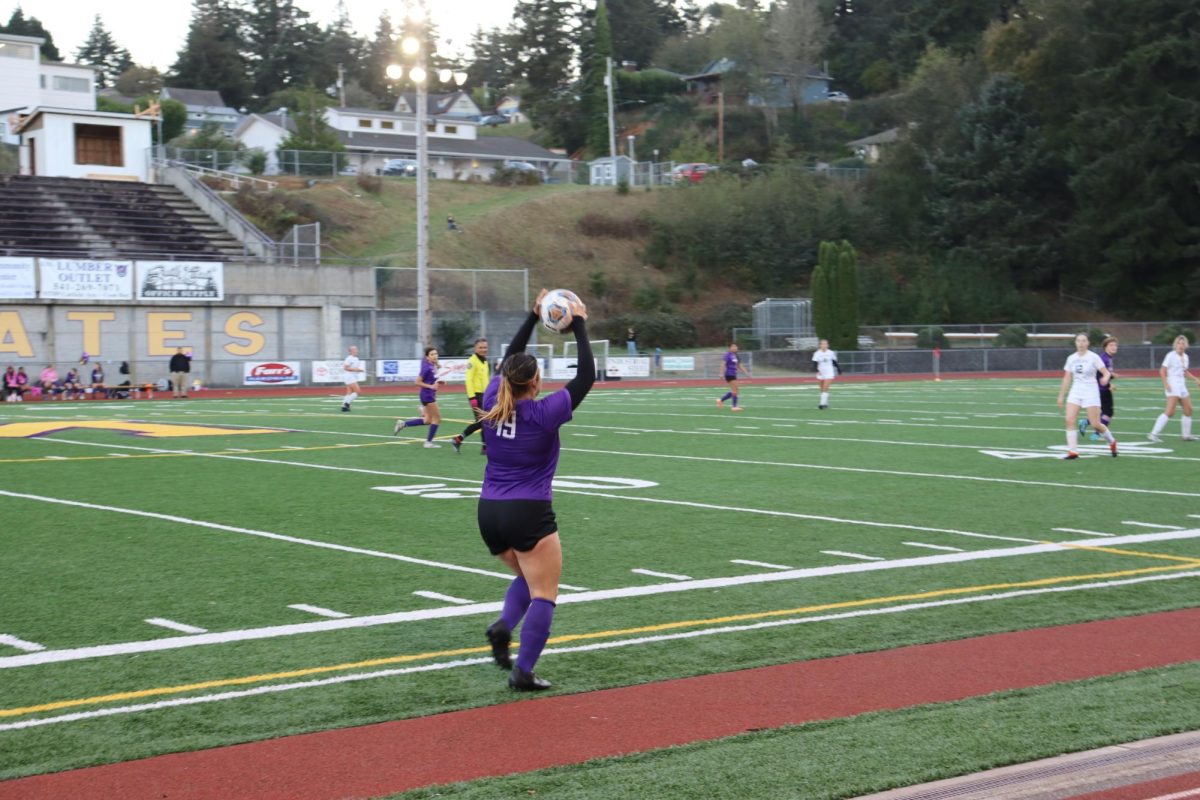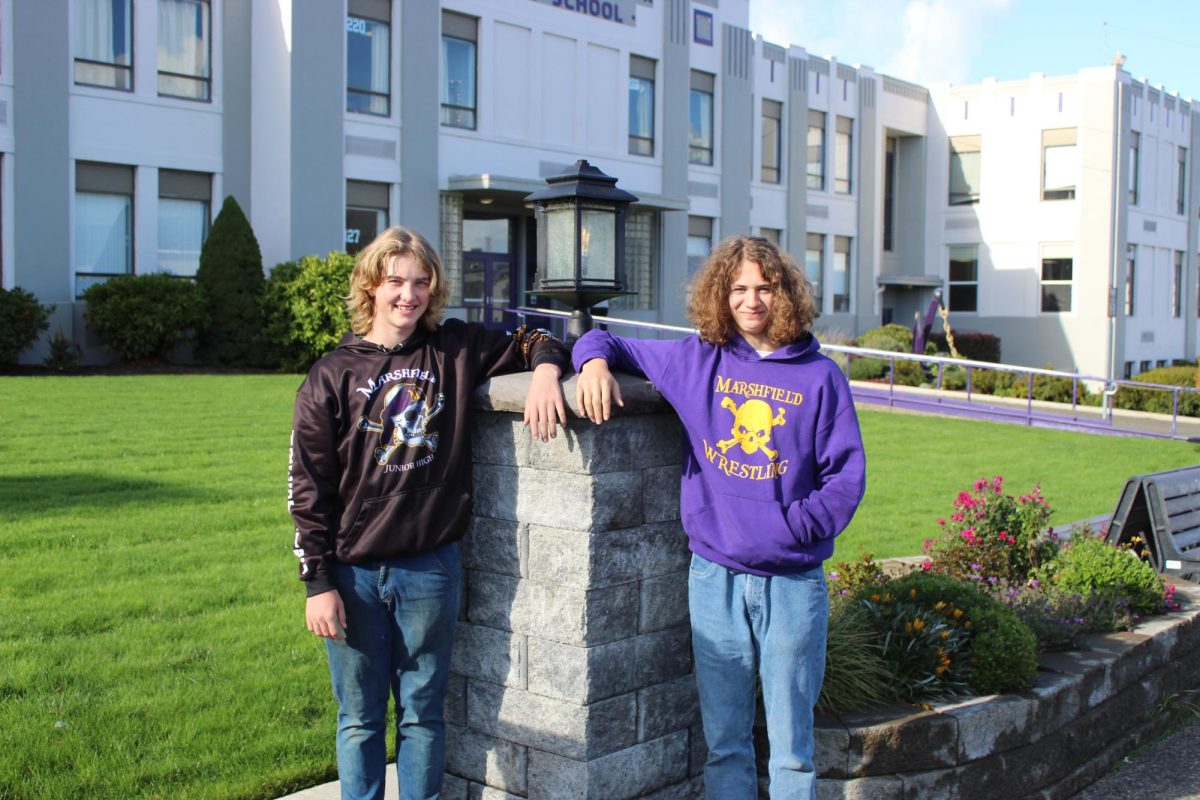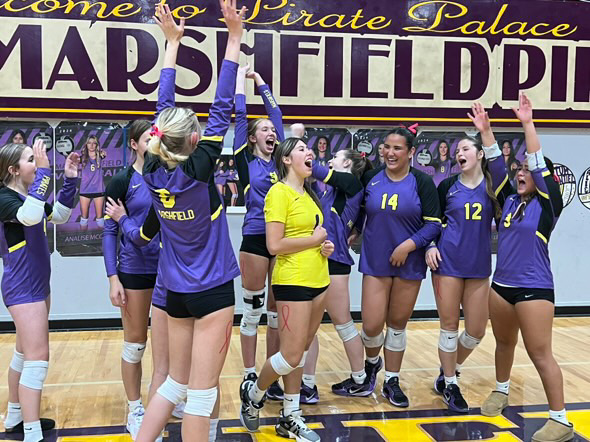One of the biggest changes at Marshfield High School in the 2024-25 school year is the change from Pirate Advisory Time, PAT, to advisory. The focus of the PAT of yore has shifted to the four C’s in advisory time: community involvement opportunities, career exploration and goals, college and post-secondary plans, and character development to support academic and social-emotional growth. Changes primarily make way for new career readiness standards introduced by the Oregon Department of Education. But as with any change, things can be rocky at first.
“I think it’s dumb,” said MHS junior Gigi Folck. “It’s like a whole other class added on to my other seven college classes. I don’t need that stress.”
Also called homeroom at some schools, the purpose of advisory time has always been to have one central location for students to check in throughout the week, to receive school announcements, and have a home base. Students typically use the class as a study hall, to make up work or connect with teachers for individual assistance. There is less time for a lot of that now.
In the past few years, PAT was held every day for at least 25 minutes. On Thursdays it was 50 minutes, and on Friday everyone spent over an hour in advisory time. This year, Monday through Wednesday is the same time, but Thursday and Friday’s advisory classes are just 30 minutes. In addition, extra career readiness material has been added to upper grades. For lower grades, there is emphasis on study skills and techniques to teach students how to be successful. But students are up in arms about the PAT to advisory transformation.
“The way that organization and strategies are being taught are insulting because people learn their own ways, and they have their own pattern,” said Alyssia Pottle, a junior. “Kids can be unsuccessful because they are being told to do things in a different way that doesn’t use their tools.”
Instead of being able to use their advisory time to make last-minute changes to an assignment, or meet with a classmate to collaborate on homework, students are asked to sit down and think about their future. Most of the time is accounted for with career or college readiness tasks, or AVID strategies, which teach best practices for success in school.
“We have no time to work on work from other classes,” said senior Noah Libitsky. “We have other stuff outside of school, so we don’t have any time to work on it at all, which is making us fall behind.”
The ODE standards requiring focus on higher education and career path skills were rolled out in June 2024. Beginning with the class of 2027, Oregon high school diplomas will require a half credit in personal finance education, and a half credit in higher education or career pathway skills. How schools choose to implement these requirements is their choice, and varies from district to district.
Some students, like senior Lilly Brown, are frustrated because they are being asked to adhere to the new guidelines even though it’s not quite a graduation requirement for them yet. And friends, who attend other area schools, are not implementing the same types of guidelines yet.
“There are schools that don’t require advisory, it’s an elective,” said Brown. “I think a study hall is nice to have, but I don’t think we need it. That’s what PAT was for, especially kids with extracurriculars, and now it’s just busywork.”
The bell schedule on Thursdays tried to account for the additional time students would need to touch base with teachers. However, the guidelines for that time have also been altered since school began in September. Initially, these were scheduled at the beginning of the day, before 1st period. However, it has since been moved after 1st period on Thursdays, for 45 minutes. Students originally were only to attend office hours if they needed help. However, with the change, every student reports to their advisory class, then moves to classes where they need help.
For many, the idea behind advisory class, or homeroom, is not a new one. Salvador Chioto moved to Coos Bay recently from Gold Beach, Ore. His previous school was also beginning the new career readiness standards, but it was all different. They also have similar advisory time, but he was surprised that teachers keep track of students by having them sign in and out using their planners.
Another big focus of advisory time is to promote school spirit, focus on social-emotional learning, and foster class bonding. The original idea behind PAT was for students to have the same teacher for advisory in all four years of their time at MHS. The recent shift will change a student’s advisory teacher from year to year, which can lead to both positive and negative experiences.
“I mean, I did get to meet a new teacher,” said Folck. “Mr. Kruse is awesome, very chill. He’s another support for me now, and that’s awesome.”
The social and emotional component of advisory consists of teacher-led discussions on varied topics from finding your purpose, to mingling and greeting someone new. There are approximately ten social-emotional learning activities in semester one. In the past, Coos Bay School District used Character Strong to support their SEL activities.
“The point of this year is to try and teach social and emotional skills,” said Pottle. “It would be more effective if it were integrated into our core classes instead of in a separate period. It could be worked in gradually, instead of in a separate class.”
This year’s seniors are facing some of the biggest challenges, as some of their time in advisory is being spent on a capstone project, or on their senior portfolio. On top of that, they are working on career information systems, or CIS, to help them explore career paths.
“The biggest changes are adding AVID based lessons on study skills and updating the senior portfolio project,” said MHS teacher Stephani Howe, who is on the advisory steering committee because she wanted to help make advisory time more productive. “We also added social-emotional learning on things like handling stress, staying positive, and leadership. The new curriculum uses class time to help students gain better study skills and to better plan their future after high school.”
Added to resume work, scholarship applications, and heavy course loads for some, and the students are feeling the time strain.
“PAT, a lot of the time your teacher would help you with college or scholarship essays, but now we don’t,” said Brown. “We are just expected to do it and expected to know what to do…on top of CIS stuff, on top of portfolio stuff.”
Students who are athletes and try to balance athletics with academics have also been feeling the pinch. Even though it isn’t much on some days, the PAT time of the past was relied on to fill in gaps that may be missing due to athletic time out of school.
“As a student athlete, you’re already learning your study habits,” said freshman Daxton Johnson, who was used to Buccaneer Advisory Time, or BAT, at the junior high school last year. “Not having BAT takes my study time down, which affects both my social life and my mental health. Not having it affects my ability to keep good grades.”
But MHS has to meet the career readiness standards in some way, and advisory time seemed the best fit for now. With a master schedule that is full to the point of busting, there seemed little option for creation of an entirely new class, so this is the period of adjustment.
“I could see how it could be useful,” admits senior Coleman Cobb. “I understand it, but it was just thrown at us. I feel like if it were put out slowly, it would have been better.”
Most students do agree that there is some value to the changes, and advocates have long argued that financial literacy should be taught in schools.
“The career stuff is helpful,” said Libitsky, “but we could do that at different times of the day. We could do that in PAT, but we don’t have time to work on the stuff that counts.”
The vision of student success after high school is not unique to ODE. Recently hired CBSD superintendent Justin Ainsworth announced his goals to work on what he calls the three E’s: ensuring Coos Bay students have a plan to either be enrolled, enlisted, or employed. Staff members also have high expectations.
“I hope this takes us to a place where students are ready to have a successful life after high school, no matter if they join the military, work force, or gain more education,” said Howe. “Students should have a plan to follow to get straight to their life after high school.”
Whether staff, student, or administrator, one thing is for sure: the advisory changes have impacted the current school year. While change is inevitable, it can be painful at times. As the school year progresses, stakeholders will find balance in the chaos.
There are priorities,” said Folck. “I know how to use a planner, I know how to use my stuff. This is school. Sink or swim.”
Categories:
The struggle is real: meeting advisory career readiness standards
0
Tags:
Donate to The Marshfield Times
Your donation will support the student journalists of Marshfield High School. Your contribution will allow us to purchase equipment and cover our annual website hosting costs.
More to Discover
About the Contributors

Maitea Zatica, Website Manager
Junior Maitea Zatica is a Third year journalism reporter. This year, Maitea returns as a part of the website team and now runs the social media page (@themarshfieldtimes). Maitea now invests herself in school and other activities. In her free time, Maitea loves going to Sunset Bay, going swimming, walking, driving around, watching movies, and reading. Now, Maitea drives around constantly in her cute little Tan BMW i3. Maitea used to live in Boise Idaho and went to Lowell Scott Middle School before moving here in October 2021. She also used to participate in Basque dancing in downtown Boise Idaho on the Basque Block and also got to participate in festivals and activities surrounding the Basque community. Maitea is also a part of the ASB Leadership team as the Head Publicist. Next year, Maitea plans to stay in journalism and use it as her English class.

Darielle Aya Koffi-Plebou, Asst Distribution Mgr
Sophomore Darielle Aya Koffi-Plebou, known as Aya, is back, embarking on her second year with the Marshfield Times staff. She enjoys playing musical instruments, writing, drawing, painting, reading nonfiction books and poetry, and playing with her pets. Her favorite movies are the Conjuring franchise, and her favorite show is Dexter. Her favorite books to read are still “The Hate U Give” and “Save Me an Orange.” Darielle also has a diverse music taste, enjoying genres such as 90’s hip-hop, R&B, rock, and indie. Aside from having her own free time, she is busy too. Darielle is involved in the South Coast Equity Coalition, the United States Naval Sea Cadet Corps, Z-Club, and Marshfield High School’s Black Student Union, as well as Marshfield High School’s newest class, JROTC. Speaking of the Sea Cadet Corps, she takes on the role of Leading Petty Officer (LPO). Since the age of 5, she has been fascinated by space and astrophysics. She is also a proud member of Marshfield High School’s Speech and Debate team. Following high school, she plans to pursue a career in the Air Force, Coast Guard, and the Marines to eventually be an optical engineer or an aeronautics engineer for NASA.


